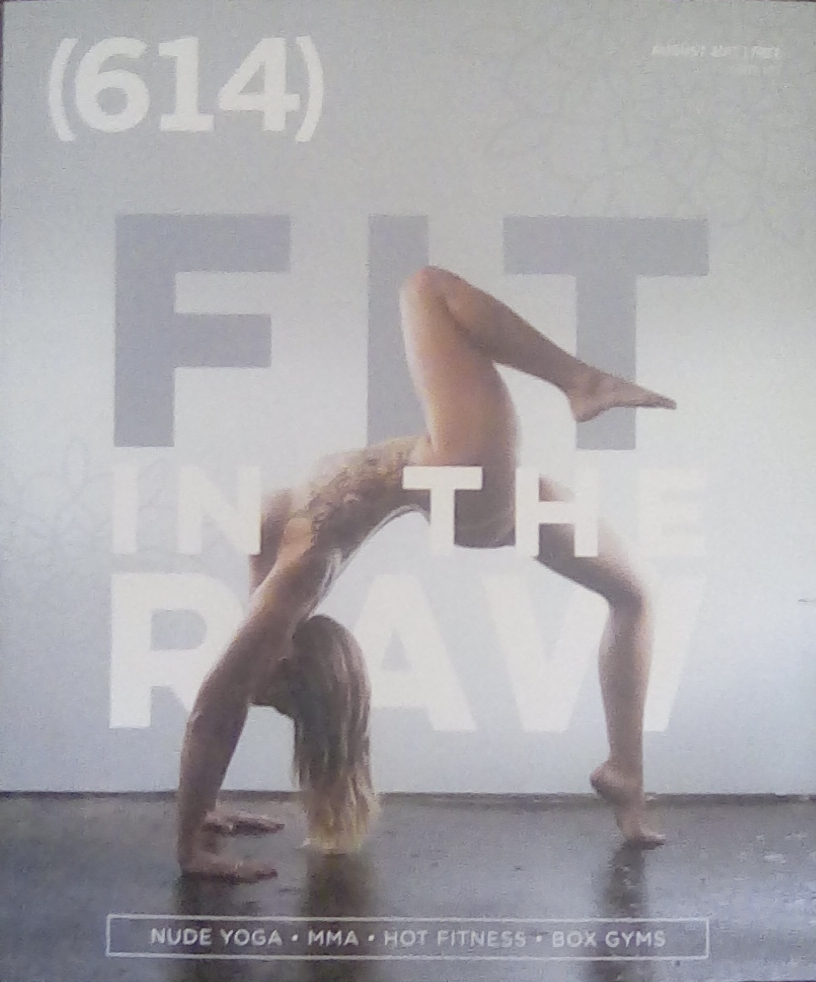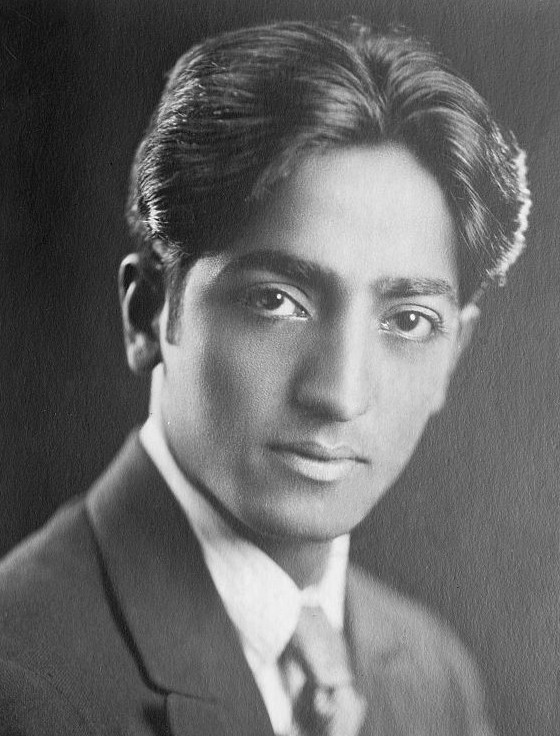What is Meditation? (November 2017 Newsletter)
What is meditation?
How is meditating beneficial?
How long does meditation last?
How do you meditate?
What is the best time to meditate?
Where are the best places to meditate?"
These are questions that a high school student emailed me and wants to use for a high-school article she is writing on meditation. These are not questions that can be answered in a few short sentences. Meditation is not a science. It is not based on facts to be analyzed, criticized and discussed. That has largely been the problem with its practice in the West where everything worth learning, comprehending and mastering is a science able to withstand a variety of testing. Standardizing results of the outcome must always be measurable and similar, if not identical. How else can you judge or justify the accuracy of the discipline? But meditation is not a science. Each of us is unique, and the ways in which we meditate and the effect we experience is quite different for each of us.
"The things that trouble our spirits are within us already. In meditation, we must face them, accept them, and set them aside one by one." ~Christopher L. Bennett. This is the first step in meditation practice - dharana in Sanskrit, is the focused thought on one object in the mind, or physically in front of us. Practiced daily, it may take a lifetime. But meditation - dhyana, is something much more. "Meditation should not be regarded as a learning process. It should be regarded as an experiencing process. You should not try to learn from meditation but try to feel it. Meditation is an act of non-duality. The technique you are using should not be separate from you; it is you, you are the technique. Meditator and meditation are one. There is no relationship involved." ~Chogyam Trungpa Rinpoche
Meditation is often undertaken by most earnest students to reduce stress, because they have been advised that it does so effectively. This is only a side effect of meditation. If one has never felt a longing to connect with an Energy/Entity mightier than oneself, to have that become a driving force of one's existence and direction, meditation is just another means to find a way to relax. There is nothing wrong with that, but that's not why meditation was traditionally practiced.
Austrian scholar and philosopher, Rudolf Steiner, suggests what meditation is: "When we raise ourselves through meditation to what unites us with the spirit, we quicken something within us that is eternal and unlimited by birth and death. Once we have experienced this eternal part in us, we can no longer doubt its existence. Meditation is thus the way to knowing and beholding the eternal, indestructible, essential center of our being."
There really is nothing to learn about ways to practice focus. It is more about doing it. It is an intuitive practice, an ability to connect with the deep silent space within each of us and to just rest there, till our busy thoughts start to slow down and dissipate. Many different techniques have been practiced over the ages, and one of these will surely work for you. Daily practice is the key: several times a day for just a few minutes, without busying yourself with other activities or people, practicing at the same time daily, and using the same location. Whether you sit, stand, walk or lie down, it doesn't matter, they all work.
Most of us practice 'dharana' or mental focus, rather than 'dhyana' or meditation, which is beyond thought - it is the extended gap between any two thoughts. Try it - just watching the space and the light that fills your gaze as you close your eyes.
Check out our meditation workshops at YWB every month on the second Sunday of the month.
Namaste,
sipra
Well-Being: You can nail it! (October 2017 Newsletter)
Daily changes in the physical body tell us much about our physical well-being and health. Changes happen over time and indicate changes to the internal 'landscape' through aging, sickness and lack or excess of essential nutrients and the like. At the same time these symptoms and telltale signs are precursors of disease and imbalance.
Have you noticed how the look of finger and toe nails change from time to time, and then revert back to their normal state? According to Ayurveda, the traditional Indian science of good health, they are telling you that your health may be at risk, and you can take early steps to reverse the condition.
Nails with a purple tint may suggest a lack of oxygen. It can be the result of a chronic lack of oxygen in the respiratory system such as in bronchitis, asthma or emphysema.
Nails with vertical ridges (could be almost imperceptible to obvious) indicate poor digestion and the fact that the body is not absorbing all the nutrients it needs. Some possible factors could be GI tract issues, toxins in the system, and poor diet.
Nails with horizontal line(s). Usually a single break could appear across the nail. According to Ayurveda this reflects a fairly serious health issue that occurred when that part of the nail was growing. Poor metabolism, an infection, and underactive thyroids are some of the possibilities. Several break lines across the nails show an underlying imbalance, which should be treated.
Unusually large and small moons of the nail. Ideally, the moon or lunula, should be largest at the base of the thumb, and successively get smaller at the base of the other nails. Very small or missing moon indicate digestive problems usually related to the body's ability to absorb and convert the food to nutrients to keep the body healthy and growing. Very large moons on the nails show too much 'agni', (literally 'fire') which refer to the digestive acids, juices that cook the food for digestion by the body. Neither shows great digestion.
Pale nails could indicate low red blood cells or an anemic condition, or some autoimmune disease such as rheumatoid arthritis. Usually pale nails go with fatigue, weakness and poor blood circulation. A simple start would be to add a variety of green and colorful vegetables to your diet, as well as iron and good quality vitamin supplements.
Mellow Yellow, Gold and Brown. (October 2017 Newsletter)
Transparent Buddha sculpture by Yuiji Honbori
(More information on his work. Video by YWB member Colleen Morrissey.)
Yoga-Well-Being is a practice that touches each aspect of our lives and tries to bring balance to it all, such that we can ride the waves that buffet us physically and emotionally and always stay riding the crest, and moving us in the direction we need to go. Here are simple and practical steps to Well-Being. Be a wellspring of life and spirit to those around you. Think of giving, not taking! Serving, but not being served.
It is for each of us to listen intently to the voice within, consider the possibilities and grasp the opportunities that allow us achieve our unique best in this life. This is called Dharma in the yoga philosophy: finding out through our lives, through each true and false step, the real reason for being on this earth, in this existence, at this time.
We are each of us unique, and as you know, not even identical twins are entirely alike. I am different from anyone and everyone that has walked the earth so far, or will in the future. What is my raison d'être? Why am I here? Not for the material things. They are impermanent and transient. Not for the relationships, important though they are. They are transitory and fickle as well.
Life is not all about myself. Living in a co-creating and co-existing Universe, and drawing our breath from the Energy of the Universe, life is about making my own life better while serving others. We feel best when we are not focused on ourselves. It is not really about making myself feel good. Serving others comes first. It's hard work and that's the joy of it. How can each new day, each new moment not create an excitement within you.
What have you done for another being today?
Namaste,
sipra
Well-Being: Being Present (September 2017 Newsletter)
Driving past a bus stop the other day, I noticed an all too common sight. Every single person was either talking on the phone or reading it. The ever-present phone has made our lives insular and global at the same time. We reside in our heads and are divested from our beings. In so many ways this is not a good thing.
Cell phones have become our constant companions and our connection to the world. It is a good thing in that it allows us to be safe, and tune in immediately to the needs and companionship of family and friends. How did we ever manage without it? It's a bad thing in that it makes us lose touch with the world around us, never looking around, never looking up. People watching and nature watching can relax and restore us. It allows our minds to calm down from the constant chatter. Why would one want to add more information to an already cluttered brain? In the few minutes you have between here and there, (and if you don't take the bus, make it a daily walk,) turn off all sound, be unavailable for just 30 minutes each day.
Oh yes! And what about what it's doing to memory and hearing? Nowadays, one immediately refers to the phone for the schedule, the address, the details of a personal/official contact. Why not exert the brain? Pretty soon, unfortunately, neuro transmitters will stop firing and creating less brain and less nervous (as in relating to nerves) energy. Memory? The best way to keep it active is to use it. As for hearing loss, it's a serious consideration. Science is still studying the effects of constant electronic vibrations and abnormal frequencies bombarding the ears over long periods of time, but it can't be good.
We shouldn't feel we need to be 'doing' something all the time. JUST BE! JUST BE PRESENT for a change!
Labor Day and the end of summer (September 2017 Newsletter)
Photo credit: Ian Sane
Happy Labor Day! Enjoy your day off. It's a day to relax and if you have time to spare, spend a thought on what is changing as summer wanes. Listen to the lazy sounds of cicadas and tree frogs, and be aware of the distinct difference in the feel of the sun on your skin.
In the Ayurvedic medical tradition of India, it is all about focusing on svasthya, (good health, or keeping the body in balance,) rather than remedying an illness. The time of sharp seasonal change, ritusandhi (ritu "season" + sandhi"juncture") as summer slides into fall, leaves us often sick and out of balance. Pitta (the dominance of heat in our bodies and in the environment) is slowly slipping into Vata(dominance of volatility and airiness in ourselves and all around us as the cold winds start to blow). We need to consciously change our diets, our schedules, our attire, and our daily activities as they relate to eating, sleeping and exercise.
Spend a few minutes planning a schedule to move into the fall season and get ready for it. Change your diet from a lot of cold, watery, raw foods to warm and seasonal roots, fruits and juices and stop adding ice to your water. Warm water is detoxing and is a diuretic. Start to set up a routine that allows you to go to bed a little earlier than usual and wake up earlier too. Try to get on a more regular schedule. Add more of the good oils to your diet and to your skin as the drier, colder Vata season approaches.
At Yoga-Well-Being, we offer Sadhana (life-coaching), private sessions that help you plan your life, your diet, your direction - using the age-old traditional wisdom of India. Check out our website for more details.
Namaste,
sipra
Interview and Favorite Yoga Poses (August 2017 Newsletter)
August is time for the annual fitness issue of (614) Magazine, freely available in many locations around Columbus. Check out the interview with Sipra on page 63 (excerpt below).
If you had to give one advice to yoga newbies, what would it be?
You must find the right class for your temperament, and you must do it on a regular basis, which is at least three times a week. Yoga does not work in your body like the new, improved, super-strength Excedrin for one ailment at a time, to mitigate the discomfort. Yoga works on each and every body system, physical and mental. Slowly and surely, everything will fall back into balance and you will experience a euphoria that doesn't dissipate, no matter what. 'Svasthya' is the Indian word for good health. It is not the absence of disease, but the body in balance, always returning to its natural state of wellness, a sort of homeostasis.
Well-Being: Favorite Yoga Poses
In her interview with (614) Magazine, sipra was asked what her favorite yoga poses were. There wasn't space for her to explain why she chose three of the simplest poses. Here are her explanations of the hidden depths of these basic postures:
- Sukhasana (simply sitting crossed legged with the heels tucked deep): This pose is truly what yoga is supposed to do to put one in a 'good space' (sukha), and to create in the individual a sense of balance and stability (sthiram) - Patanjali in Sutra 2.46, 'sthiram, sukham asanam', or poses should create a sense of balance and ease. This basic pose is powerful and stable and gives me a sense of being deeply rooted in the earth from where I can draw on solid, neutral, grounding and healing energy.
- Balasana (child pose): Simple, simple, simple - folding forward from kneeling till the forehead touches the ground and the hips rest on the heels, with arms resting by one's side this pose replicates the position of the unborn child. Melting into the earth in this pose activates a sub-cellular intelligence in the brain, which brings it back to the place in the womb. It is a place of unconditional love from the parent, a place of complete safety and security, and a place where no thoughts or worries intrude, since thoughts are the results of earthly experiences, and there have been no experiences before birth.
- Tadasana (standing with arms by one's side at easy attention): How simple can this be? Well, not so easy when you think of all the small motor actions that create this simple pose. Coordinating left and right sides of the body - medial and distal; lengthening up towards the sky and rooting down into the ground. Arranging with preciseness and careful alignment the left and right hips and shoulders, rotating joints of both arms and legs in opposite directions, slipping the kneecaps up towards the quads to release the hamstrings at their origin. Feet and hands carefully and consciously arranged. Along with all this goes the steady focus of the gaze or 'drishti' to activate the parasympathetic nervous system.
Relationships (August 2017 Newsletter)
Jiddu Krishnamurti (1895-1986) in the 1920s
At the start of our classes we each talk about health, work, home and about all of life in general. Many YWB practitioners regularly address their difficulty with relationships. These range from simple daily interactions at home and work, to more serious personal and life-changing ones. Our perceptions are our own, and are the result of our personal experiences from the moment of birth and even in-utero. It is difficult to change ourselves to accommodate the thinking and perceptions of another. Read the contemporary philosopher, Krishnamurti's thoughts below:
You have only one head and look after it for it's a marvellous thing. No machinery, no electronic computers can compare with it. It's so vast, so complex, so utterly capable, subtle and productive. It's the storehouse of experience, knowledge, memory. All thought springs from it. What it has put together is quite incredible: the mischief, the confusion, the sorrows, the wars, the corruptions, the illusions, the ideals, the pain and misery, the great cathedrals, the lovely mosques and the sacred temples. It is fantastic what it has done and what it can do. But one thing it apparently cannot do: change completely its behaviour in its relationship to another head, to another man. Neither punishment nor reward seem to change its behaviour; knowledge doesn't seem to transform its conduct. The me and the you remain. It never realizes that the me is the you, that the observer is the observed. Its love is its degeneration; its pleasure is its agony; the gods of its ideals are its destroyers. Its freedom is its own prison; it is educated to live in this prison, only making it more comfortable, more pleasurable. You have only one head, care for it, don't destroy it. It's so easy to poison it.
Krishnamurti's Journal, September 17, 1973
Among other things the above paragraph may bring to mind, do you begin to see the difficulty with relationships? They are always teetering in the balance. This is known as 'Dukha' (meaning 'bad axle hole' in an old-fashioned bullock driven cart,) the state of humankind to always suffer a bumpy ride on life's journey, rarely in a state of contentment where life flows smoothly. Relationships are thrilling and yet contain a twinge of anxiety, of uncertainty, of loss, of fear...it is so because you are you, and I remain my ego self.
Is it possible to change this state of being? Rumi states, "Yesterday I was clever, so I wanted to change the world. Today I am wise, so I am changing myself." Maybe we should all give it a try every day, and all our lives.
Namaste,
sipra
Well-Being: Seeing Clearly (June 2017 Newsletter)
Sipra, doing well after her first cataract surgery.
Wellness is a state of mind as much as it is a state of being. When we know we can take steps to make life easier and better, we should act. It is that juncture when one can foresee that it is the right time to take steps to change the dysfunction. Life sometimes jolts us into this realization through an uncomfortable incident. It could be the deception of a friend or partner, or some physical or mental discomfort that doesn't seem to be getting better but only aggravating over time. Do something! It will not go away. Walking away or a corrective action, or surgically removing the offensive cause of dis-ease may be expensive in many ways, but it's better done sooner rather than later. The hurt, the pain will soon go away, and you will come out of it stronger, better, healthier.
I have some developing cataracts in both my eyes, and I could wait a few years for them to mature enough to require surgery. Even though they are not really hindering my vision, I decided to get them removed now while I am in good health and recovery should be quick. There is always an element of risk, but one takes the pros and cons and decides on what to do. But do something we must!
I am having two cataract procedures on May 30 and June 13. I will be back to instruct classes when I get the go-ahead from my surgeon. Classes will continue with YWB instructors graciously offering to sub my classes. My daughter, Pia, trained at White Lotus, California, will be visiting Columbus for a week and will teach three classes as well.
Well-Being: Snacking (May 2017 Newsletter)
Everyone is always talking about diet and eating right. Actually it's simple. Just remember to think carefully before consuming anything. Eat well at mealtimes and have a filling meal. Snacking becomes unnecessary. Most snacks like pretzels, crackers and cheese, chips etc. are best avoided.
If you eat well at mealtimes, you don't need to snack. Don't buy snacks that are not so good for you. You will not have them around when you feel you have to snack on something. Don't add additional salt, sugar, butter, cream, or hard cheeses except to season your food.
With fresh food seasons coming up, enjoy fresh fruit and vegetables even for a snack. Still feel like you want to munch on something? Try a few nuts.
Drink plenty of water flavored with lemon or fruit flavors, if you don't like it plain. Avoid pop during, after, or between meals.
You have heard this before. Now just do it. Consistently.
NIYAMA: COMMITMENT TO ONESELF
Niyama: Commitment to Oneself
In the October newsletter we considered commitment as a philosophical concept according to Patanjali's 'Yoga Sutra'. Life is all about commitment and surrender. 'Commitment to the cause and surrender to the result.'
In a practical sense, our commitments make us who we truly are. Do we value our own word? Often we will do all we can to follow through on what we have promised others, but just as often we drop the commitment to ourselves. How can we do our best for others if we don't practice it on ourselves first? How can we feed the hungry when we ourselves are starved?
Start by being your best self! In the study of yoga one learns that it starts with Niyama in Ashtanga (or the Eight Limbs of Yoga) which is the second step in physical, mental and spiritual growth. Niyama (the commitment to daily observances relating to oneself) consists of keeping oneself morally pure in body, mind and spirit (shaucha); being content (santosha); persistently practicing self-discipline (Tapas); self-study/self reflection (Svadhyaya); and focus on the Ultimate Reality or spiritual transformation (Ishwarapranidhana).
Commitment is a conscious decision made by us to/for ourselves. It is made with full awareness of the goal in mind - to be better, and to ultimately be the best we can be in this lifetime. It is a commitment to connect with our better Self, and connect to the world around us in loving and giving ways. It is not at all about how we look or how we present ourselves to the world. Nevertheless, self-care is very much a commitment to ourselves.
Hold your head up high, friend, and breathe deep. Make heads turn in wonder at the majesty of your Being.
Namaste,
sipra





